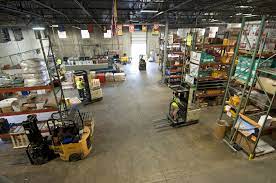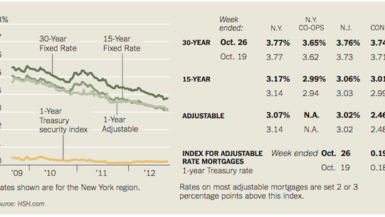The allure of living near the coast is undeniable. The soothing sound of crashing waves, the picturesque views, and the refreshing sea breeze draw people to coastal areas seeking the perfect slice of paradise. However, coastal properties are constantly exposed to the harsh elements of nature, including saltwater, storms, and erosion. As a result, coastal construction requires careful planning, using specialized materials and techniques to withstand the challenges posed by the marine environment.
Understanding Coastal Construction Products
Coastal construction products encompass a wide range of materials and solutions designed to protect, stabilize, and enhance structures built in coastal zones. These products serve three primary purposes: as building materials, erosion control measures, and waterproofing solutions. Let’s delve into each category to understand their significance better.
Types of Coastal Construction Products
Coastal Building Materials
Coastal building materials are the foundation of any construction project near the shoreline. These materials need to withstand constant exposure to saltwater, humidity, and changing weather conditions. Some commonly used coastal building materials include:
Concrete
Concrete is a versatile and durable construction material widely used in coastal areas. However, to make it suitable for coastal construction, it must be formulated with appropriate additives and reinforcement to resist the corrosive effects of saltwater.
Steel
Steel is renowned for its strength and resilience, making it an ideal choice for coastal structures. However, like concrete, it requires protective coatings to prevent rust and corrosion.
Timber
Wood has a natural charm and is often preferred for coastal homes. However, it requires pressure treatment and regular maintenance to resist decay and insect damage caused by the coastal environment.
Coastal Erosion Control Products
Coastal erosion poses a significant threat to properties near the shoreline. Erosion control products help mitigate these risks and maintain the integrity of the coastline. Some popular erosion control products include:
Seawalls and Revetments
Seawalls and revetments act as barriers, protecting shorelines from erosion caused by waves and tides. They are typically made of concrete, steel, or rock and form a line of defense against the relentless force of the sea.
Geotextiles and Geogrids
Geotextiles and geogrids are synthetic fabrics used to stabilize soil and prevent erosion. They are often placed beneath coastal structures to reinforce the ground and provide additional support.
Riprap
Riprap consists of large rocks or concrete blocks placed along shorelines or embankments to dissipate wave energy and reduce erosion. It acts as a buffer, absorbing the impact of waves and protecting the underlying soil.
Coastal Waterproofing Products
In addition to erosion control, coastal structures require effective waterproofing to prevent water intrusion and damage. Some essential coastal waterproofing products include:
Waterproof Membranes
Waterproof membranes are applied to various surfaces, such as roofs and foundations, to create a barrier against water penetration. They are crucial in areas with heavy rainfall and the constant threat of water exposure.
Sealants and Adhesives
Sealants and adhesives play a vital role in coastal construction by sealing joints and connections, preventing water leaks and enhancing the overall structural integrity.
Drainage Systems
Effective drainage systems are essential to channel water away from structures and prevent water buildup that could lead to flooding and water damage.
Factors to Consider in Coastal Construction
Before undertaking any coastal construction project, several factors must be carefully considered to ensure the longevity and resilience of the structure:
Environmental Impact
Coastal construction must be carried out with a focus on preserving the natural environment and minimizing disruption to coastal ecosystems.
Weather and Climate Conditions
Coastal areas are susceptible to storms, hurricanes, and other severe weather events. Building designs and materials should account for these factors to ensure the structure can withstand the forces of nature.
Longevity and Durability
Given the challenges posed by the coastal environment, choosing durable materials and construction methods is crucial to ensure the longevity of the structure.
Best Practices for Coastal Construction
To create resilient and sustainable coastal structures, adhering to best practices is essential:
Engineering and Design
Engaging experienced coastal engineers and designers is critical to developing structures that can withstand the unique challenges of coastal living.
Compliance with Regulations
Coastal construction projects are subject to numerous regulations and permits. Adhering to these guidelines ensures that the project is environmentally responsible and legally compliant.
Maintenance and Monitoring
Regular maintenance and monitoring of coastal structures are essential to identify and address potential issues before they escalate.
The Future of Coastal Construction Products
The field of coastal construction is continuously evolving to meet the demands of an ever-changing environment. Some trends that are shaping the future of coastal construction products include:
Sustainable Materials
The construction industry is increasingly adopting sustainable materials that have a lower environmental impact and can withstand coastal conditions.
Advancements in Technology
Innovative technologies, such as drones for monitoring coastal erosion, are transforming the way coastal construction is planned and executed.
Conclusion
Coastal construction products play a vital role in building resilient and sustainable structures along the shoreline. By utilizing specialized building materials, erosion control solutions, and waterproofing products, we can create homes and infrastructures that withstand the challenges of coastal living. As we move into the future, the emphasis on sustainability and technological advancements will further enhance the way we build and protect our coastal communities.





Leave a reply